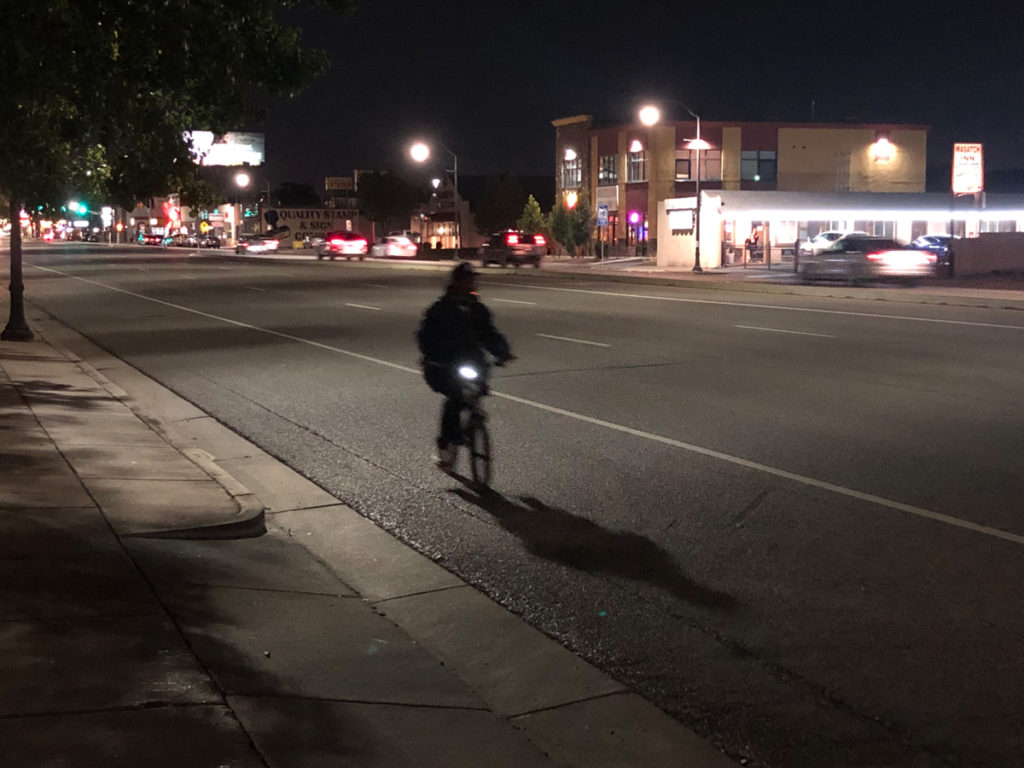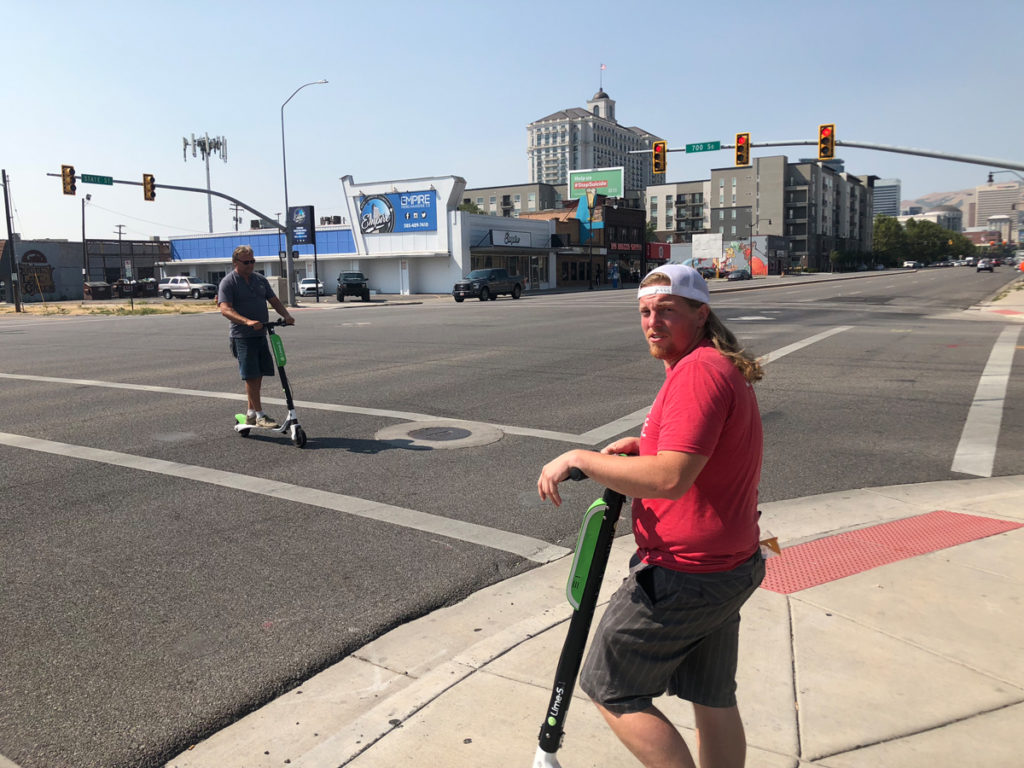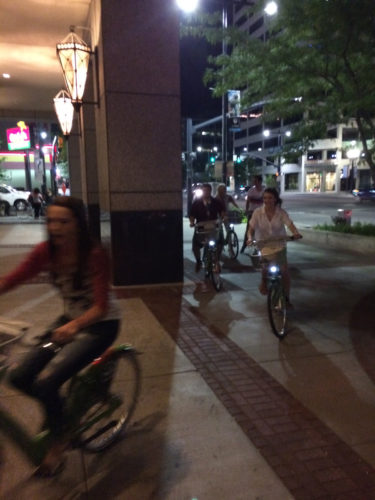December 16, 2020 – Salt Lake City has released the preliminary plans for the 600 S to 900 S section of State Street. The city intends to revitalize the area by expanding sidewalks, creating better pedestrian infrastructure at intersections with bulbouts, landscaping, and more. Mid-block crossings are planned, as are some reductions in parking. The project would narrow the lane widths on State Street in order to slow traffic speeds. There are no bike lanes or bike accommodations planned for State Street.

Concurrently, a bike lane study is being conducted for 200 E and Main Streets to create better cycling conditions on those streets.
The project is an outcome of the Life on State study that ran from 2016-2018.
Comments can be submitted on the Life on State website (https://www.lifeonstate.com/) or by emailing: lifeonstate@slcgov.com
Comments are due by December 21, 2020.
See the preliminary State Street design.

Editorial:
The Life on State Preliminary Design Fails because it Doesn’t Include Bike Lanes
We applaud the efforts of Salt Lake City to make State Street more of a people friendly street, but they fall far short of making the street safe for cycling.
As the Life on State project moves on, Salt Lake City and UDOT continue to ignore one of the most needed and most suggested improvements for the street – bike lanes.
No bike lanes are planned for State Street, this despite the need, despite the fact that the majority of stakeholders wanted bike lanes when the Life on State was conducted.
In fact the first listed goal from the study is as follows:
GOALS + PRIORITIES
These goals were written by the stakeholders and community, and priorities were established with public input. These goals directly address the concerns and aspirations described in the State Street Today chapter.
“Improve Safety and Security: Create a State Street that is welcoming, safe, and healthy by improving traffic safety for drivers, pedestrians, bicyclists, and transit riders, and use urban design to prevent crime and improve security.”
Clearly, the community wants bike lanes. In fact, 67% of people of people from the open houses supported this goal and wanted the street to be safer for bikes and pedestrians. The road needs to become a people friendly street, and to get there, bike lanes are needed. People on bikes heavily use the street already, yet it is one of the more dangerous streets in the state. Why is that? It’s a car priority street that doesn’t take into account people, whether on foot or bike or scooter or skateboard. Crashes impacting pedestrians and cyclists abound (see the executive summary). Stated in the plan: “Walking and biking on State Street is dangerous. Unfriendly conditions are an obstacle to economic development.”
A goal of the study is to create a ‘Signature Street’. We’d love to see that. But this is not the right way. The Life on State Study identified option 4, which is still inadequate, as the one having the most potential for economic development. This option includes at least some accommodations for people on bikes.
But even that scenario is far short of what the community wants.
This present design is an huge step backwards. Without bike lanes, the road is just that, a road, and not a vibrant city street that puts people first.
Salt Lake City’s design misses the mark for many reasons:
- As above, in the various community meetings that were held a few years ago regarding Life on State, the community overwhelmingly wanted bike lanes.
- By reducing lane widths to 10.5 feet, there is room for bike lanes.
- The planned bulbouts mean that cyclists will not even be able to ride in the area where parked cars are since they will get pinched at each intersection in a dangerous back and forth. It precludes safe places for cyclists now and in the distant future.
- UDOT is the reason for the lack of bike lanes, and Salt Lake City needs to ask for a better street from UDOT.
- While we applaud the idea of making 200 E and Main Street good options for cycling, this does not in anyway help those who are riding to destinations on State Street. In fact, it makes it that much more inconvenient by forcing cyclists to deviate 2-3 blocks to reach a destination on State Street, and to then be forced to ride on the sidewalk.
- Cyclists currently use State Street, particularly those with lower incomes. Even Strava data shows substantial usage.
- The bulbouts will preclude safe cycling for many years by forcing cyclists who do need to ride on State to weave in and out of the outer traffic lane to safely cross intersections.
- The street design does nothing to help the people on bikes, especially those with lower incomes, who use State Street currently.
The proposed plan from Salt Lake City and UDOT ignores most of what is in the Life on State study. And as such is a failure.

Vision:
State Street should be the premier street in Utah. It should have a clear mission of being a people first corridor, with safety, economic vitality, equity, and environmental sustainability as goals. State Street should not be a highway, nor a high speed roadway. It’s filled with small businesses from Draper to the Utah State Capitol. Yet it is one of the most uninviting, unsafe streets in the state.
The Life on State Study gets it: “Above and beyond this, State Street should regain its stature as a signature street. It should inspire us and reflect our highest aspirations. It should be a premier address for businesses as well as public institutions. It should be an example of the future of transportation, as it was with first the oxen teams, ushering in the automobile age, and soon, the first automated vehicles and shared transportation systems. It should be a “can’t miss” place for visitors to the capital city and leave them wanting to visit again.”
But the implementation does not.
A State Street with bike lanes, better sidewalks, landscaping, lower speed limits, and an emphasis on people not cars, from Draper to Salt Lake, could be the premier street in the state.
Two lanes of traffic in each direction, not three, protected bike lanes, and better sidewalks is a much better vision for the roadway. It’s safer, healthier, and better for the people of Utah. We need to make this happen.
Editor’s Note, we have previously written about State Street here.





